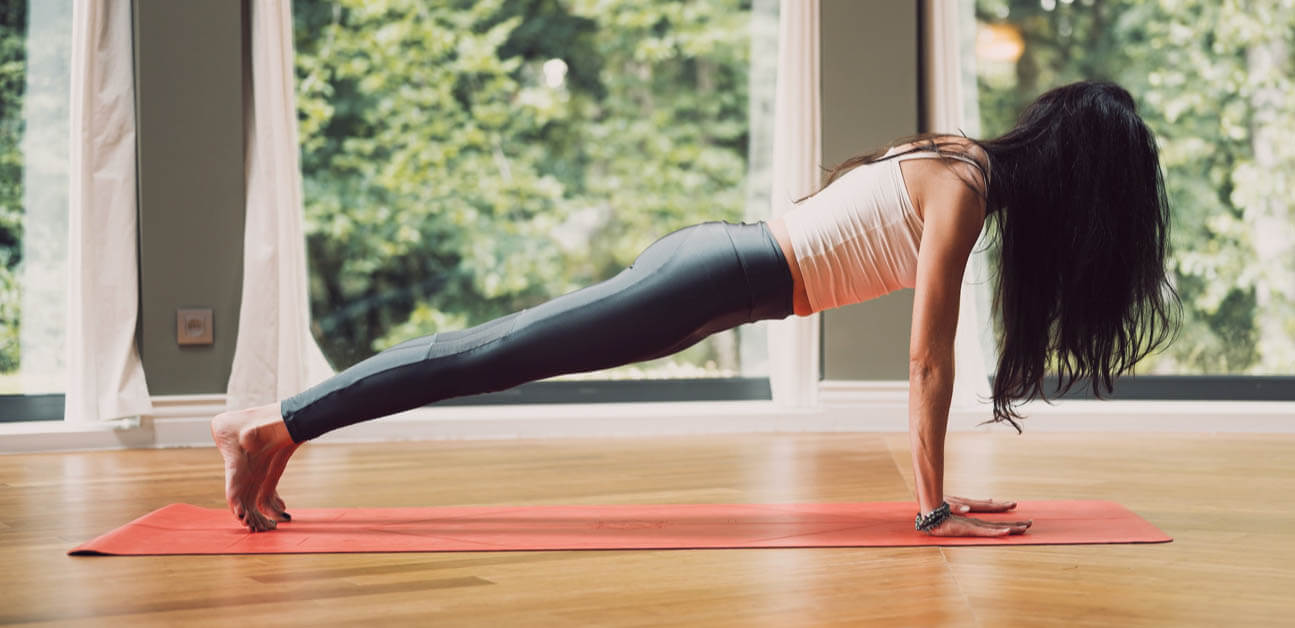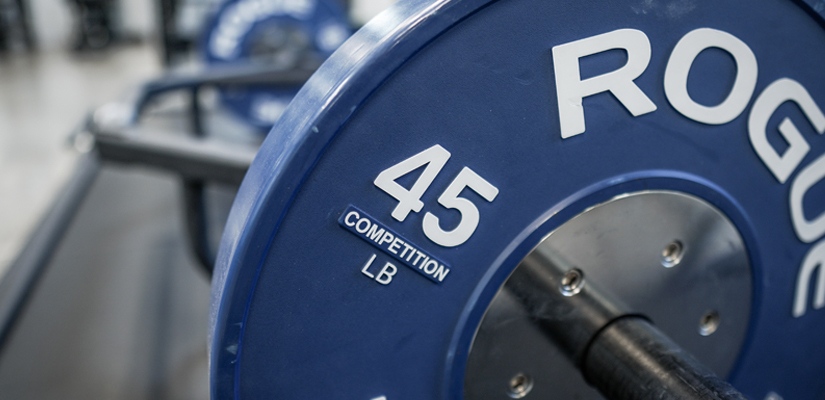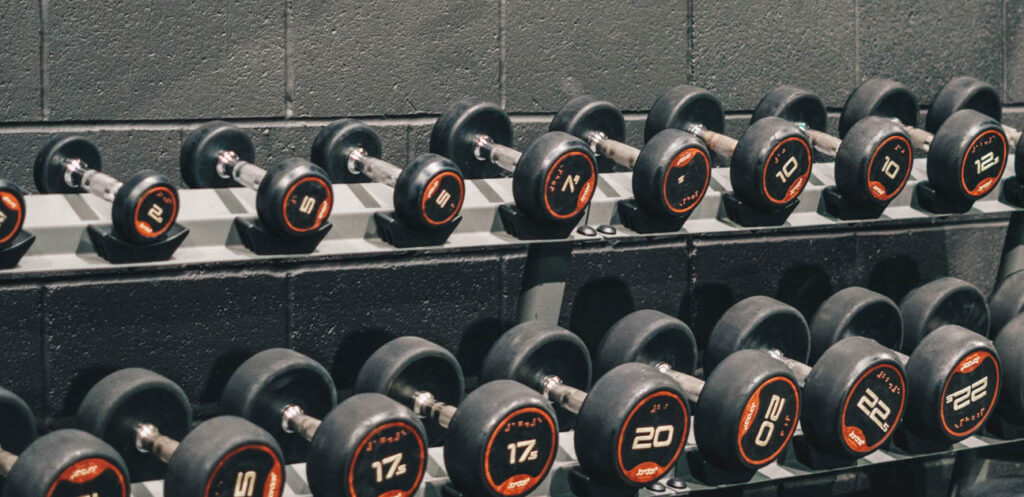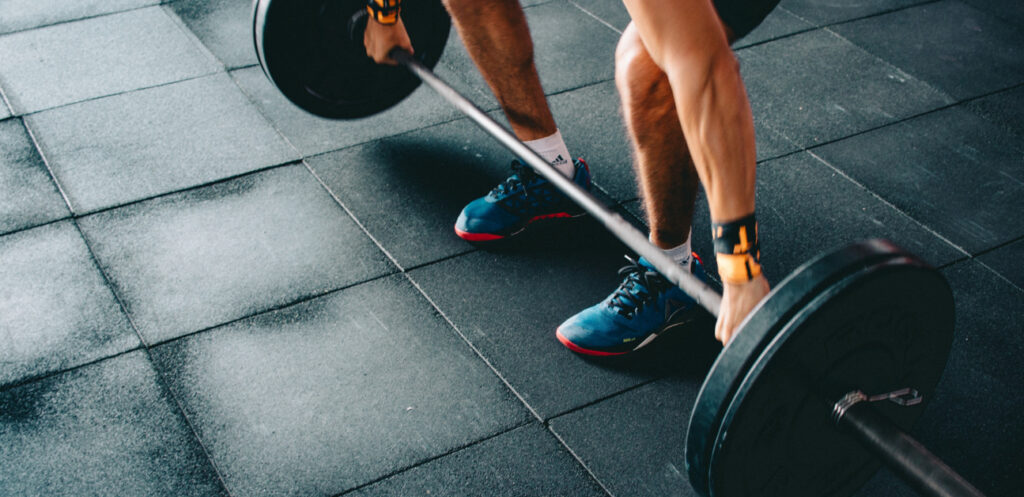5 Core Exercises for Cyclists to Improve Efficiency and Strength

Cycling is practically synonymous with the legs, but core strength is an equally important and frequently overlooked part of riding a bike. The stability of a strong torso makes you more efficient, more powerful, and more resistant to injury, so we’ve chosen a few of our favorite simple exercises for cyclists to strengthen their cores.
5 Core Exercises for Cyclists
- Elbow to Tall Plank
- Lateral Walking Push-ups
- Hollow Holds
- Single-Dumbbell Overhead Squat
- Half-Turkish Get Ups
The Benefits of a Strong Core
Riding a bike is more than just pedaling. While your legs are responsible for the direct work of turning the crank, the rest of your body plays a bigger role than you might realize. Your pelvis and hips anchor you on the saddle, your back suspends your upper body over the handlebars, and your abs and sides provide rigidity and support. Collectively, these and other muscles of the torso are referred to as your core, and they are crucial in making you efficient and stable on the bike.
Riders with weak cores waste energy rocking or swaying. The stronger your core, the more of your power actually works to move you forward. For this reason, core strength is particularly important when pedaling out of the saddle or in aero position. Additionally, a strong core reinforces good form and prevents injury. It can help you stay in control over rough terrain, improves efficiency for better sustained power, and helps you resist fatigue over the course of long rides. Put simply, if you ride a bike, you can benefit from core strength.
Core Muscles Used in Cycling
Traditional definitions of the core are usually limited to the midsection, such as the abs, obliques, and lower back. While these are key areas, almost every part of the body is somehow involved in the act of efficiently riding and steering a bike. For this reason, we use the term “core” loosely. What we really mean is a rider’s trunk or torso, extending from the shoulders all the way down to the pelvic floor and lower back.
This expanded definition includes a wide range of muscles. They include the transversus and rectus abdominis (the abs), internal and external obliques (your sides), erector spinae (straightening muscles in the back), pelvic floor (the groin and sitbones), gluteus maximus (the buttocks), and the trapezius (the neck and shoulder blades), among others. None of these muscles work in isolation, so the best core exercises for cyclists target the functional interaction of multiple muscle groups.
Adaptive Training
Get the right workout, every time with training that adapts to you.
Check Out TrainerRoadCore Training Frequency
It doesn’t take a major investment of time to see benefits from simple core work. We recommend incorporating these exercises into your routine twice a week, with a maximum of three times per week if it doesn’t interfere with your on-bike workouts. If you’re limited on time or feeling tired, even once per week can be productive for maintenance.
Reps and durations can vary dramatically based on experience and ability. For movements, start conservatively with anywhere from 12 to 20 reps, prioritizing form and monitoring how your body responds. For isometric (stationary) exercises such as planks, start with a few reps of about 30 seconds to a minute (with 30 seconds rest in between) and add reps and time as you progress. Any time you add a new movement or exercise to your routine, reduce the reps of your existing exercises to allow for the new progression.
Our Five Favorite Core Exercises for Cyclists
There are endless options for core exercises, and countless variations of each movement to try. These are our favorites, but feel free to experiment and see what works for you. Just remember to always focus on form and start small.
1. Elbow to Tall Plank
Planks are the classic go-to core exercise, with good reason. They don’t require special equipment, they target multiple muscles, and they can be done almost anywhere. This variation turns planks into a more active exercise, with an asymmetrical balance component analogous to riding a bike.
Start in an elbow plank position, making sure your elbows are directly in-line with your shoulders. One arm at a time, lift yourself into a standard plank. Lower yourself back to an elbow plank, and repeat. Throughout the movement, focus on engaging your core by tucking your tailbone to keep your torso flat. Don’t dip your lower back, drop your head, or raise your butt.
2. Lateral Walking Push-ups
Related to planks and also combining functional strength and stability, this is a simple variation of the familiar push-up. To do this exercise, follow a push-up with a lateral step to the side while in plank position, then repeat. You can move in one direction repeatedly, or move back and forth between each push-up.
This lateral movement addresses a common muscular weakness for cyclists, and activates stabilizing muscles that can directly benefit your pedaling efficiency. As with planks, it’s crucial to keep your lower back flat by activating your abs and glutes (squeeze your butt!) Keep your hands just over shoulder-width apart, directly below your chest, and don’t flare your shoulders. During push-ups your elbows should bend at an angle behind you, not straight out to the side.
3. Hollow Holds
Another classic core exercise, hollow holds activate the abs, hip flexors, and quads, and by adding a little weight they can also engage the shoulders for upper body stability. Hollow holds begin on your back, with your feet together and arms overhead. Activate your core by pressing your lower back down into the ground, and raise your arms and legs off the floor. Hold this position for several seconds.
Form is key- don’t tuck your chin into your chest, and make sure your shoulder blades are off the ground. Crucially, your abs should be engaged the whole time, to actively keep your lower back in contact with the floor. For an added challenge, hold a single dumbbell, or for more challenge still, try a dumbbell in each hand.
4. Single-Dumbbell Overhead Squat
While not a stereotypical core workout, this deceptively challenging exercise engages leg strength, torso stability, and functional shoulder and arm strength that many cyclists overlook.
Stand about shoulder-width, with your knees directly over your feet. Firmly hold a dumbbell with your arm extended straight over your shoulder and your elbow locked. Now, keeping heels planted and maintaining level hips and shoulders, squat your hips back and down below your knees before standing fully back up. Alternate arms and repeat.
To emphasize core engagement and range of motion, try touching the floor with your free hand at the bottom of each squat while still maintaining good form. Start by lightly touching your fingertips on the ground, and as you gain proficiency, touch your clenched fist and eventually your open palm.
5. Half-Turkish Get Ups
With diverse benefits including shoulder stability and strength throughout the core, this exercise looks simple but involves a complex interaction of muscles and movements. It’s typically done with a kettlebell, but a dumbbell or even household objects can work perfectly to add a little weight.
Lie your back, with your right knee bent and right foot flat on the floor, and your left leg fully extended at a 45 degree angle to your side. Hold your kettlebell or weight straight overhead in your right hand, and extend your left arm out to your left side. Now, staring at the weight to keep it directly above you, push off your left arm to raise your upper body until your weight is resting on your left hand. Simultaneously raise your hips off the ground too, by pushing through your right foot. It should be one continuous movement into this raised position, then hold it for a moment before lowering yourself back down. Switch sides, and repeat.


